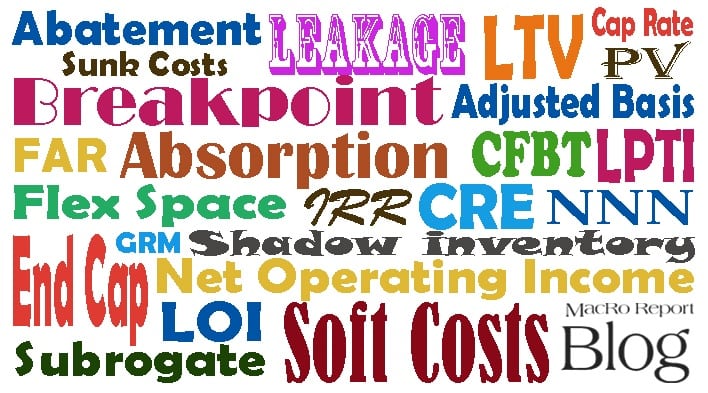Terms Brokers and Owners Might Not Know But Should, A to E

No matter how many properties you own or how many years you’ve been a broker, sometimes you don’t know what you don’t know, as the saying goes.
The challenge for many is understanding the “language” of commercial real estate. Some may even consider it a foreign tongue … and if one is not careful, one may find themselves making a commitment to a contract or lease that’s not at all what it appeared to be.
All too often, a residential real estate agent who has “dabbled in commercial” brings a customer to meet a seasoned listing broker or landlord on a property tour of flex property. Not wanting to appear naïve to certain terms that are specific to the industry, the untrained agent might just nod in agreement while the listing broker rattles off a sentence like this:
“The terms of the lease will not include any abatement of rent nor will the pass-through’s be tied to base year expenses.”
Not only is the language different in the world of commercial real estate from other industries, but certain terms may also have other meanings between product types or within different geographic areas. So what one commercial real estate broker may say in an historic town, like Frederick, Maryland, may be very different from what another uses in Helena, Montana.
In that vein, here are some lesser know commercial real estate terms that you might not come across frequently, but are good to have in your proverbial “back pocket”:
Abatement
Often referred to as free rent or early occupancy and may occur outside or in addition to the primary term of the lease.
Assemblage
A purchase of two or more parcels by one property owner. When a premium is paid over the market value that amount is the Assemblage Value because of the buyer’s special motivations associated with their use of the combined parcels. Typically the buyer is in the process of assembling several contiguous parcels to make one large parcel for a particular project, and this transaction is one of many purchases that have or will take place. For the purchase of a lot to expand the buyer’s existing parcel, see “Expansion” definition.
Adaptive Reuse
A building converted to a different use in order to meet contemporary demand. Examples would include a warehouse converted for retail use or an office building converted to a school.
Absorption
The amount of inventory or units of a specific commercial property type that become occupied during a specified time period (usually a year) in a given market, typically reported as the absorption rate.
CAP Rate
Capitalization rate: A percentage that relates the value of an income-producing property to its future income, expressed as net operating income divided by purchase price.
DSRC
Debt-service-coverage ratio: Ratio of net operating income to annual debt service. Expressed as net operating income divided by annual debt service. A ratio of less than 1 means a negative cash flow.
End Cap
The ends of a strip center, whether the configuration is linear, L-shaped, U-shaped, or other.
Equity lease
A type of joint venture arrangement in which an owner enters into a contract with a user who agrees to occupy a space and pay rent as a tenant, but at the same time, receives a share of the ownership benefits such as periodic cash flows, interest and cost recovery deductions, and perhaps a share of the sales proceeds.
Have a useful commercial real estate term, law or code to share? Or a related story to tell? Please share it in the comments. We’d love to hear from you.
* Source of definitions: National Association of Realtors and CoStar.com
